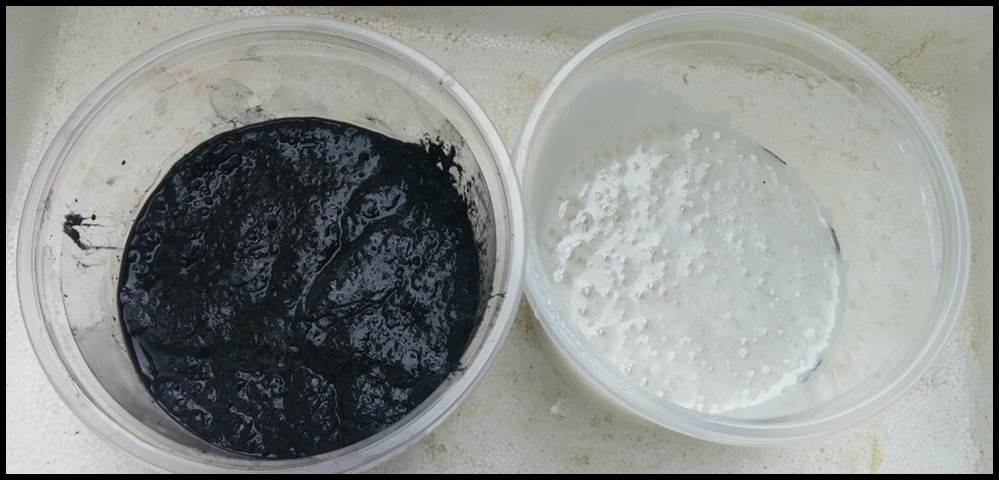For the past several years I have been very focused on upcycling organic waste streams through carbonization but lately the question of inorganic or synthetic waste streams has begun to interest me as well. This is due in no small part to the fact that many landfills in the US, including the one closest to me, are reaching capacity.
Polystyrene (aka StyrofoamTM) is particularly problematic. Most of us are familiar with the single use products made from Styrofoam (e.g. food and beverage containers), but apparently it is also used under roads to reduce frost damage as well as being used for insulation in construction. Still, more than 2 million tons of the stuff ends up in landfills every year. Given that polystyrene is 95% air, that translates into a huge amount of landfill space, not to mention the cost of transportation to get it to its final resting spot.
While researching possible ways to upcycle this fossil fuel based material, I found shredders and compactors, but also chemical methods for converting it into something new. The most interesting one was using pyrolysis to convert polystyrene into a biodegradable plastic. Who knew when I started researching this that I would find the words pyrolysis and polystyrene in the same sentence! Not only that, but the researchers found that putting the liquid slurry that results from pyrolysis into the soil seemed to boost growth in common soil microbes. While I haven’t yet attempted to pyrolyze polystyrene, I think it will be fairly straightforward in my Kon-Tiki kiln as long as the vessel can contain the liquid, perhaps some kind of smelter-like apparatus placed in the middle of the burning embers.
In the meantime I used another chemical conversion technique which is much quicker (though undoubtedly much less healthy!): acetone. A very small amount of acetone melted the Styrofoam food container (which I guiltily accepted at a restaurant recently) in no time. It was a bit like watching the wicked witch of the west in The Wizard of Oz movie.
Since nearly everything is better with a little biochar (in my humble opinion), I added finely ground biochar to the slurry figuring that the melted polystyrene would make for an interesting binding agent. The result is the small little square shown in the picture. It’s still curing but for now it has the consistency of a hardening marshmallow. (An early lesson learned: do not leave out in the sun to dry unless you want black goo all over the place!) Presumably a similar, but probably healthier, slurry would result from pyrolysis rather than the use of acetone, but I will leave that for chemical engineers to test.
So what could this organic and inorganic waste stream combo be used for? Given the research from Dublin showing that soil microbes actually benefit from a diet of styrene oil and knowing that biochar also benefits soil microbes, then the likelihood is high that the combination of these two would also benefit the soil. If that holds true the possibilities for products could be endless. Especially of interest would be products such as pots or urns or other items that are placed in the earth that should eventually biodegrade. Time will tell what other uses there might be for this new type of polymer (byrene or char-rene?), but it sure seems like a promising way to mitigate the mountains of Styrofoam in a very beneficial manner!
UPDATE #1: after about 36 hours, the char-reign is approximately 95% cured (hard). It is super light-weight and unbreakable when I throw it around. In another day or so it should probably be completely cured and I can test for water and heat absorption!
UPDATE #2: Interestingly test piece #1 floats in water and doesn’t absorb water like biochar does so presumably the styrene oil has filled in all the nooks and crannies within the char. It also insulates really well from what I can tell though my testing wasn’t of the high tech variety: held a cold pack to one side to see if the cold was able to penetrate.
A few people asked what just pure styrene would look like without the biochar so for test #2 I made one batch of only melted PS and one batch of 50/50 PS/biochar by weight (2.4 oz of each + acetone). The PS only is still very gelatinous and has lots of bubbles present which I tried to burst through poking, taping and vibrating all to no avail. The PS only still retains the smell of acetone much more than the PS/B version. From day 1 to day 2 they each lost weight (4 and 3 ounces respectively) which I’m guessing means more acetone volatilized (good thing it was outside!). Lots more curing time needed for both since I can’t easily get them out of the plastic container!



